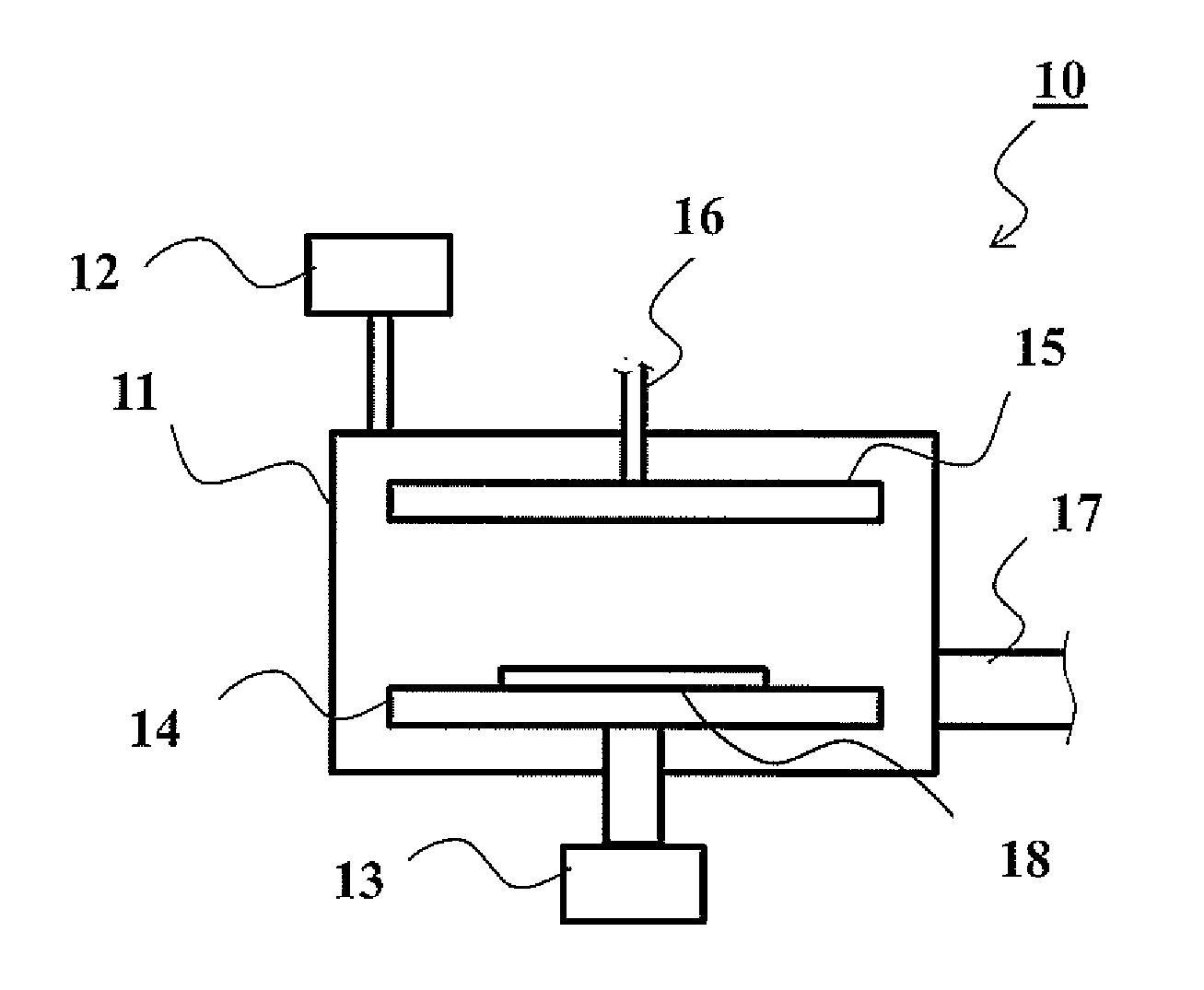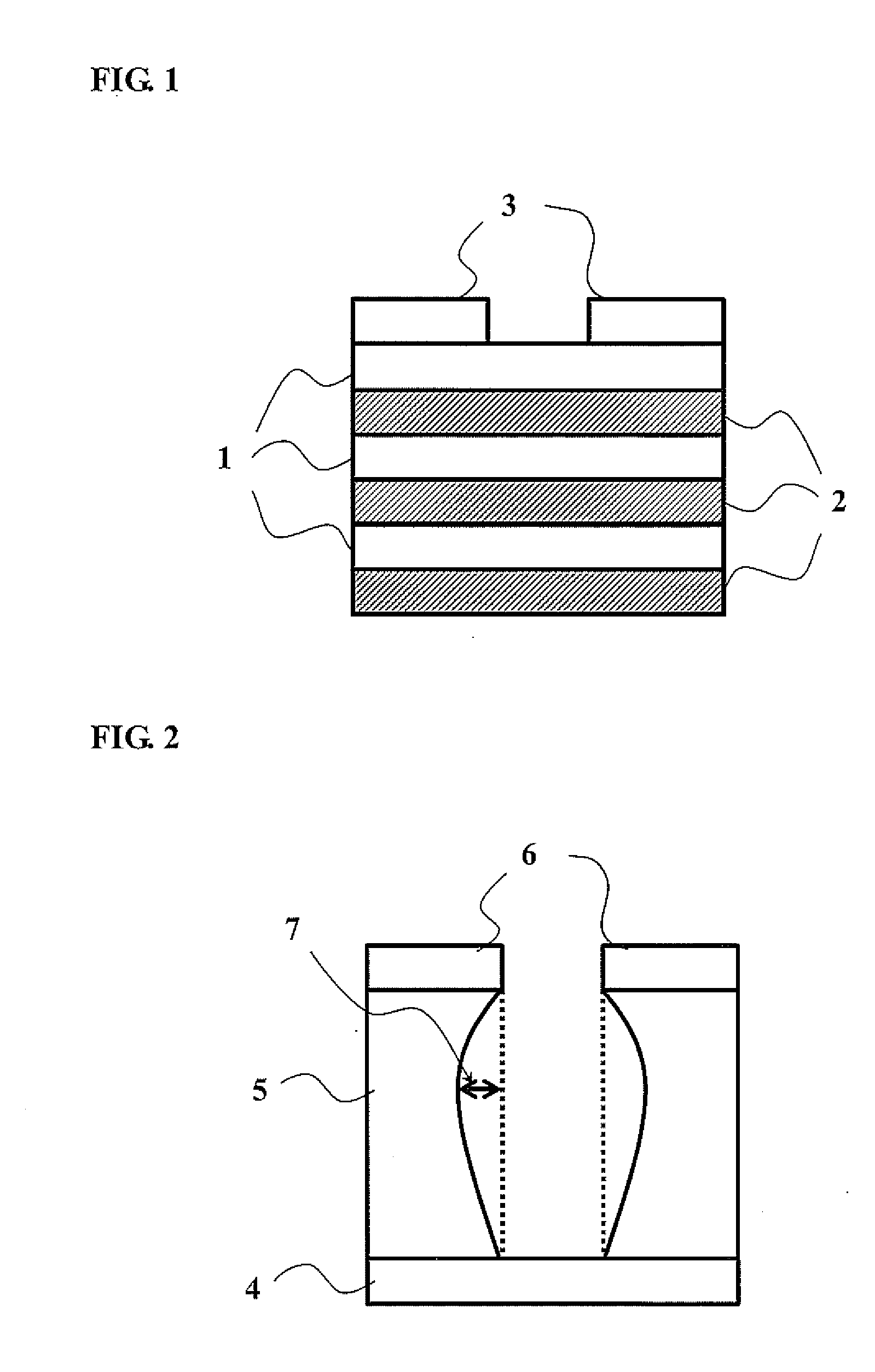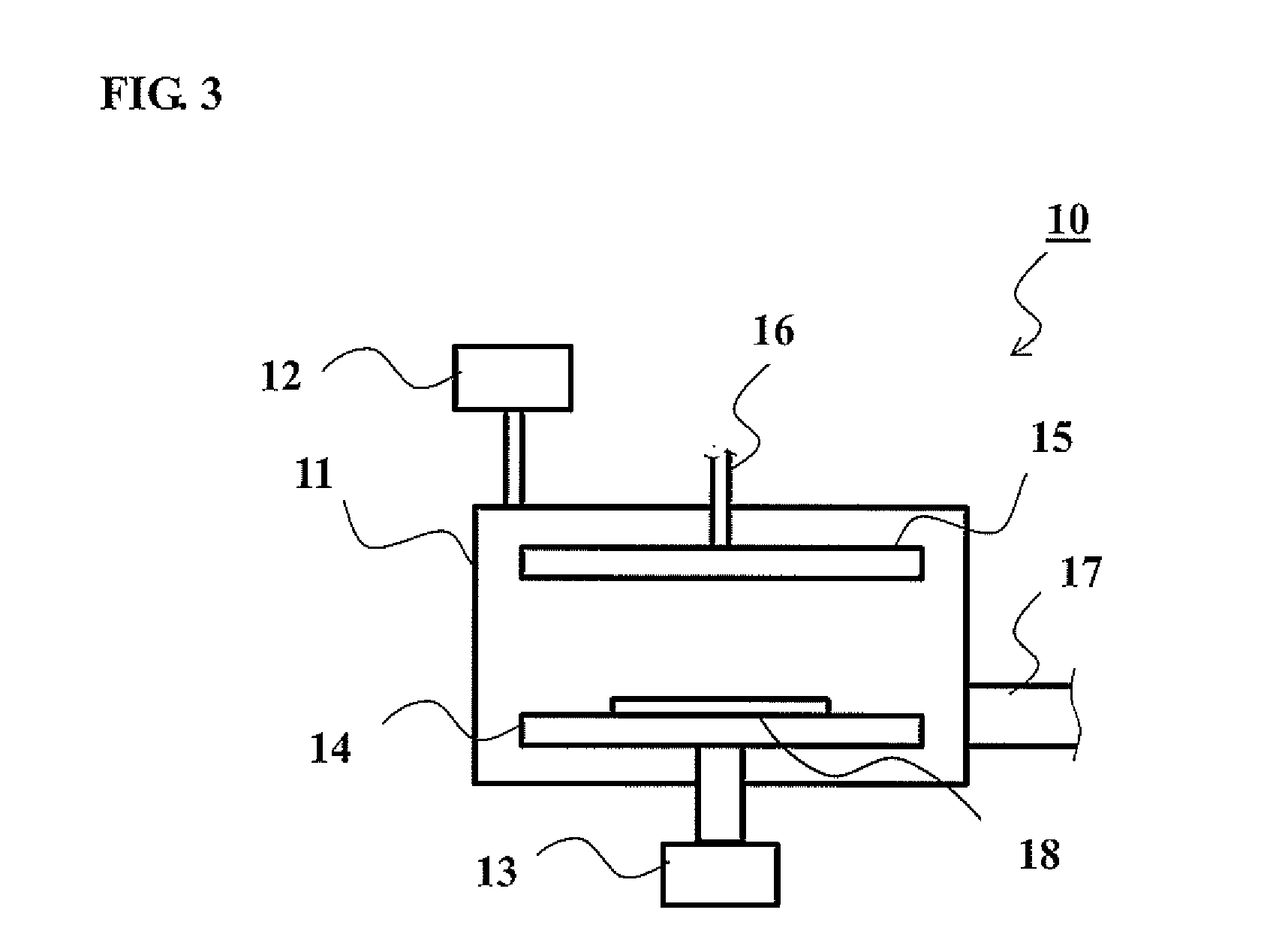Dry Etching Method
a technology of dry etching and etching plate, which is applied in the manufacturing of semiconductor/solid-state devices, basic electric elements, electrical equipment, etc., can solve the problems of bumps and depressions on the side wall (inner surface) of the through hole, or the diameter decrease in the lower, so as to suppress the unevenness of the hole diameter and reduce the bumps and depressions
- Summary
- Abstract
- Description
- Claims
- Application Information
AI Technical Summary
Benefits of technology
Problems solved by technology
Method used
Image
Examples
example 1
Etching Operation
[0053]The dry etching agent was prepared by mixing 10 vol % of C3HF5 (HFO-1225zc) as a fluorocarbon, 1 vol % of IF7 as an additive gas and 89 vol % of Ar as an inert gas. In the etching operation, the dry etching gas was fed at 100 sccm to the chamber 11; and the pressure inside the chamber 11 was set to 1 Pa. The test sample 18 was subjected to etching by generating a plasma gas from the dry etching agent with the supply of 400 W of high-frequency power. The density of the high-frequency power supplied was 1.0 W / cm2; and the bias voltage applied was 500V. As the respective gas components are substantially the same in molar volume (volume per 1 mol), the volume ratio of the gas components can be read as the mol ratio.
[0054]Performance Evaluation 1: Etching Rate Ratio
[0055]An etching rate ratio was evaluated by the following procedure to examine whether or not p-Si and SiOx were etched at equal rates.
[0056]The etching rate of p-Si was determined based on a difference...
example 2
[0061]The etching operation was performed under the same conditions as in Example 1, except that the dry etching agent used contained 10 vol % of C3HF5 (HFO-1225zc) as the fluorocarbon, 2 vol % of IF7 as the additive gas and 88 vol % of Ar as the inert gas. The etching performance was the evaluated in the same manner as in Example 1.
example 3
[0062]The etching operation was performed under the same conditions as in Example 1, except that the dry etching agent used contained 10 vol % of C3H2F4 (HFO-1234ze(E)) as the fluorocarbon, 2 vol % of IF7 as the additive gas and 88 vol % of Ar as the inert gas. The etching performance was the evaluated in the same manner as in Example 1.
PUM
 Login to View More
Login to View More Abstract
Description
Claims
Application Information
 Login to View More
Login to View More - R&D
- Intellectual Property
- Life Sciences
- Materials
- Tech Scout
- Unparalleled Data Quality
- Higher Quality Content
- 60% Fewer Hallucinations
Browse by: Latest US Patents, China's latest patents, Technical Efficacy Thesaurus, Application Domain, Technology Topic, Popular Technical Reports.
© 2025 PatSnap. All rights reserved.Legal|Privacy policy|Modern Slavery Act Transparency Statement|Sitemap|About US| Contact US: help@patsnap.com



